

Today there have been parades and speeches, ceremonies at gravesites, public officials have waxed elequant–some of them–or mumbled cliches, and many U.S. churches have, this weekend, given nod to this day of honoring the war dead.
I am not sure how to do such things properly, soberly, respectfully, Christianly, and since such memorials are often an excuse not for appropriate recollection but jingoistic justification of all wars, especially whatever war is current, I have long bowed out of our community services. (I used to make it a habit to read Lincoln’s Second Inaugural Address on this day, perhaps not a bad way to start.) Regarding flags in the church and worship of God that degenerates to baptizing the violence of the nation state, I’d recommend, as I often do, Diana Butler Bass’s well-written memoir and reflection on her growing frustration around these matters in her own church. Broken We Kneel: Reflections on Faith and Citizenship (Jossey-Bass; $23.95) is a slim but powerful story of her struggle for faithfulness in the “united we stand” era after the attacks of 9-11. You can read an earlier, brief, review of it here.
War is a Force That Gives Us Meaning by Christopher Hedges (Anchor; $12.95) is another book that I have reviewed briefly at our website’s monthly column. (Go here but scroll down past several other titles being described.) It took my breath away, it was so well written, so thoughtful, so informed by the realities of battle. Hedges, was a traveling war correspondent, has seen more fighting than most soldiers, as he has moved into war zones across the globe. His thesis here is that cultures—and certainly this is true of our own, especially today—too often are glib as they cheer the goodness of their wars, elevating these tragic affairs to noble causes. Those who rarely have seen the killing up close cheer with near glee and the citizenry reacts as if our foreign affairs are mere sporting events. The war is no longer a tragedy or “necessary evil” but a “force that gives us meaning.”
Hedges is not a pacifist (so does not oppose all warfare in principle) nor does he do the sort of theological/Biblical pondering that Bass does (above.) But his knowledge of the Greek tragedies, his deep thoughtfulness of literature and philosophy and theology, does give him a profound vantage point. He worries well for us all, calling us away from glamorizing the horror that is war.
Our family has lost relatives in war; as I have commented before, both my late father and father-in-law were proud World War II vets, and my brother, an officier in the Viet Nam war era. I respect them deeply. My hunch (and my experience in first-hand conversations) is that those who have been closest to the battlefield—unless blinded by an ideology of patriotism—will agree with much of what Hitchens writes here.
As we make our yearly pilgrammages to the cemetaries and endure the grand flag of our land used for advertisments for everything from malls to yard sales to beer bashes, it would do us well to commit to thinking this through. I commend these two books to you for your early summer reading. Perhaps by the time the 4th of July rolls around, you will be that much better equipped to think faithfully and feel appropriately and speak wisely to your friends and neighbors and church members. It is a topic that must be on our lips.
Monthly Archives: May 2006
Shouts and Whispers

Twenty-One Writers Speak About Their Writing and Their Faith. The sub-title is intriguing enough, but when you find out who these writers are, it becomes, well, something to shout about. We don’t usually presume quite so much, but our staff was on the phone within minutes of unpacking this awaited treasure, since we knew a few literary lovers would be irked to not know of it. This is the best collection of its kind in our memory.
Who could bring together essays about writing, about literature, about fiction and poetry, preaching and spirituality, all around questions of words, words and books? The Calvin Festival of Faith and Writing, the premier gathering of its sort. Over the years, this conference has developed a fierce following, and they’ve attracted world-class writers—Updike, L’Engle, Weisel, Dillard; this year, even Salmond Rushdie. Not all of the the speakers at Calvin College, of course, are Calvinists (some, obviously, are not Christians.) All, though, are people whose faith has informed their work, and have something to say around this topic.
Do you recall my last few few posts, and the article and book list done over at the website for March? One concern about The Da Vinci Code matter has been our concern that Christians ought to consider more than the “inert objects” of the “facts” or “errors” of Mr. Brown, but ought to be attentive to the broader question of the arts, novels, aesthetics and the role of story.
I quoted Calvin Seerveld in my blog post the other day and named him as a favorite writer about the arts. Next, I couldn’t wait to mention this collection. Da V or no Da V, this is one important volume, that will be around long after the discussions about the Ron Howard film. This gives some long-overdue and top-notch attention to the interface of religion and literature.
The preface begins:
What does it mean to be a writer working in the context of faith within the world of contemporary letters? What features characterize such a writer’s work? Are these features different from those written from a secular perpsective? Do they need to be? How should a religious perspective be expressed in literature—explicityly or implicityly? And what is faith, anyway—what “counts” as belief?
Well, dip in to these essays, interviews, addresses or sermons, and enter the conversation. There is much more diversity here than you might expect, and moments of brillance abound. What else would you expect from Doris Betts, Frederick Buechner, David James Duncan, Joy Kogawa, Anne Lamott, Thomas Lynch, Katherine Paterson, Walter Wangerin? My-o-my filmaker Paul Schrader is here, preacher Barbara Brown Taylor, and poet Luci Shaw. Some are bestsellers–Jan Karon, Ron Hansen, or Bret Lott– and others may be lesser known (but offer excellent insights.) We have been eager to tell about this grand collection. The price is good for a book of over 250 pages, and we have a blog special listed below. Email or call us today.
Shouts and Whispers: Twenty-One Writers Speak About Their Writing and Their Faith edited by Jennifer L. Holberg (Eerdmans) $15.00
20% off
This month only
Mention that you saw this on the BookNotes Blog
order here
or call
717.246.3333
Calvin Seerveld: artistry as a leaven
Just in time for the Da Vinci weekend extravaganza–protests! wheezing! commentary!–I did a blog entry pointing readers to my somewhat reluctant and rather random thoughts about Christian cultural engagement and the ways to respond to the errors and anti-Christian vibe of Mr. Brown’s book/movie/media blitz. Those thoughts were found, along with a rather interesting (if I do say so myself) collection of recommended books, at the monthly column I do at the Hearts & Minds website. If you haven’t read my ramblings, or seen the list, I would hope you might, soon.
In my comments there, I suggested that Christian folk ought to know more about the arts (in this case, specifically film and novels.) I promised to reflect a bit more on that from time to time, highlighting authors and books that could be helpful to this project. I mentioned our small list of books about the arts described at the website under our section “Books By Vocation” and thought that might be helpful.
One of the authors that comes up regularly whenever we talk about a Christian view of aesthetics and Biblically-shaped interest in the arts is Calvin Seerveld. (You can see one of my many reviews of his books in the archives of the monthly column and readers have told me that this review is one that makes them rejoice that such books exist.)
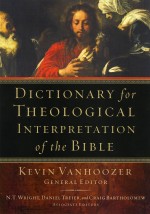
Here is a recent quote from Seerveld’s entry into the spectacular reference book, Dictionary for Theological Interpretation of the Bible edited by Kevin J. Vanhoozer (with associate editorial help from Craig G. Bartholomew, Daniel J. Treier, and N.T. Wright.) Published magnificently by Baker Academic, (SPCK in England) it is a rich and important volume. Even when Cal is limited to just a few pages–giving the history of art in the Bible and a bit on the development of artistic approaches by God’s people through church history–he writes cleanly and yet with verve and allusive gusto. What a writer he is, a man who has given his life to this topic.
(In Europe, [during] the historic Refomation) …art was viewed not as an instrument to be specially adopted by the institutional church, but as a human response to God’s grace, for service in the world at large. So art became “unchurched” but was considered a marvelous conduit for believers’ faith to be shared and imaginatively bodied forth in the public square….
…But it was especially the mundane outreach of art into the nonchurch world that received impetus wherever the centrality fo the Bible promulgated by the Reformers took hold.
Group portraits of businessmen fulfilling their nonchurch vocation (Rembrandt, Syndics of the Cloth Guild, 1662), spacious atmospheric landscapes filled with Ps. 19 glory (by Jan van Goyen and Jocab Ruisdael), scenes honoring domestic daily life (Vermeer’s Cook [pouring milk], before 1660), and stunning bouquets of cut flowers with the memento mori of a dead bug (by Pieter Claeszoon)—all testify that in the 1600’s Dutch artists were looking at God’s world outside the church door and presenting imaginative artwork about it with a vision shaped by the Bible.
A few pages later, in a concluding paragraph, Seerveld notes–these are my words–that faith-based artwork doesn’t have to be overtly “religious” and that Christ-glorifying art need not be of “spiritual” subjects (praying hands, crosses and steeples, sun-rise scenes with Bible verses etched over them–ugh!) In contrast, Seerveld cites “the novels of Alan Patan (1903-88), the cinematic oeuvre of Robert Bresson (1907-82), and the popular song of Bruce Cockburn (born 1945)” and then suggests,
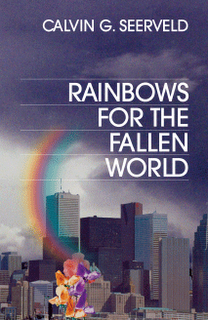
The Bible often enters artistry as a leaven in ways one cannot clearly point to as so much taste in the artistic bread distributed.
I suppose that is the way it is with all good art–allusive and imaginative (that is what makes it art, no?) The author’s worldview and vision enters as leaven, and it can be tasted. Sometimes, though, the artwork is weighed down with heavy-handedness (work done by Marxists and evangelicals are two common examples of this) so the artifact (song, novel, movie) ends up feeling like a sermon, like propaganda. Not like leaven, but blunt, didactic.
Is this one of the problems of The Da Vinci Code, not just that it has facts wrong about the reliability of first century documents about Jesus, or skews historical details from the middle ages, but that the artwork itself is so pushy about it’s Gnostic faith perspective? Some have felt this, I’m told, about the novel. Reviewers are saying it about the film. Comments anyone?
Yes, I’ve gone and done an article on The Da Vinci Code
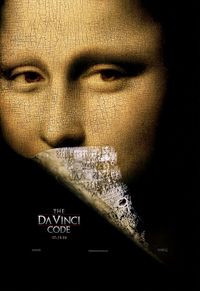
Yep, I did it. I wasn’t going to, and then I did. Five random points, a couple of nifty hot-links to some unexpected sites and a very interesting annotated bibliography. We do a new essay each month about this time over at the Hearts & Minds website, and this month we are proudly adding to the net overload of all things Da Vinci.
I would be delighted if you checked it out, and even more delighted if you told your friends and neighbors. And then, consider buying a couple of books for your local library. I’ll bet you haven’t see this particular batch of recommended reads on anybody else’s list.
You can find the Hearts & Minds website article and book list here.
For a special treat during this Dan Brown superbowl weekend, we’d recommend owning the marvelous CD Great Big World by singer-songwriter, Pierce Pettis, and play his wonderous, haunting song, “Leonardo.” We sell all his albums–Pierce’s that is, although Brown probably has some recordings, too–and couldn’t resist telling you about this one. The lyrics are best heard with the song, but for now, check out the words, here.
Little Book of Biblical Justice
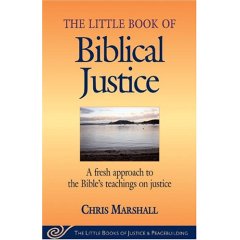
Some may have been intrigued to know of my work on asylum issues, which I wrote about in our last post. We here at Hearts & Minds have long tried to be involved in such stuff in the community and while we fail miserably at being effective mobilizers and haven’t done all we’ve hoped, God has blessed us with chances to share our stories with others. Thanks for caring…and thanks for the personal replies and calls we’ve gotten today about the Golden Venture film.
Here is a very, very simple book that lays out the Biblical basis for social justice. It is brief, solid and inexpensive. You may find it useful…
Golden Vision documentary
Most of my readers do not know about the five-year campaign that we helped with, a local campaign here in York, PA, that became the largest pro bono case in the history of American law. It was an effort to get political asylum for a group of Chinese dissidents who had been arrested when their ship, the famed Golden Venture, ran aground in New York harbor in 1993. (The link offered is brief but informative. Check it out.)
Some of the immigrants died in the rough and cold June surf; others were arrested and put in detention in York Country Prison. A handful of us started a weekly prayer and protest vigil while a flanx of lawyers and paralegals appealed case after case trying to get a fair trial for the detainees, many who were seeking legitimate political asylum; many were fleeing forced abortions and mandatory sterilization in the Fujian province in China. (China, of course, has a brutal one-child only policy and is known to do forced abortions, even late-term Cesarean sections.) Some of these brave immigrants were distantly related to Tiananmen Square dissidents. Some were Christians under persecution while others were not, but longed for freedom, drawn here by the dreams of American democracy. As we attempted to obtain their legal, political asylum, we were ignored, rebuffed, harrassed, and lied to by our own government…the INS was especially terrible in their corruption and mistreatment. We prayed and did politics, we got on the cover of national magazines, made contact with everyone from Pope John Paul to Oprah; evangelical leaders helped out, pro-lifers and Amnesty International folk joined together to work for asylum (or at least parole) to these friends who remained locked up for year after year after year.
As the weekly vigils continued–through blazing heat and winter blizzards— and our international efforts increased, some of us visited the poor guys in jail—teaching English or doing Bible studies— while others got legislation drafted or worked with the press; the lawyers, of course, did the court work. I preached, mostly, and served as unofficial cheerleader. It was hard, exhausting work and perhaps the most important political work I’ve ever done. Nearly 13 years later, I am still reeling from it all. And, even now it isn’t fully over for the Chinese (some were deported to be forcibly sterilized and beaten, others to disappear while others obtained asylum in other countries, and others are out on parole, here and around the country, living now on pins and needles, fearing deportation without due process.)
Meanwhile, the York County Prison reeled in the dough from the feds, expanded the prison, and now detains persecuted asylum-seekers from all over the world. Some local saints keep the heat on, hoping that they will not be mistreated and perhaps will recieve asylum. We sometimes feel like the guy in Schindler’s List literally saving lives where we can. Some, if deported, will be killed back in the homeland from which they fled.
Now, years later, in the midst of a new national debate on immigration, a major documentary has been made (it actually isn’t the first, but the first done by an award winning screenwriter.) Peter Cohn’s film, The Golden Venture (narrated by Tim Robbins) was entered into the prestigious Tribeca film festival and has been written up in The New Yorker and other such important journals. Please click on that link! We hosted the worldwide theatrical premiere showing (outside of the film festival) at the lovely Strand-Capitol Performing Arts Center in downtownYork, complete with conversations with film-maker Cohn and some of his assistants. It was a wonderful weekend with old colleagues re-connecting, some national-level leaders in asylum detention reform and immigration law joining us, all providing new energy for the Golden Vision Foundation, a nonprofit here which sponsors a half-way house (The International Friendship House) to offer hospitality for those who do get out of prison, now that York is one of the largest holding facilities for those seeking asylum. As I noted, we now have in prison all kinds of heros, martyrs and political dissidents from Africa, Central America, the middle East, South- Central Asia and China. Another local advocacy group which does the actual pro bono legal work has sprung up, PIRC (The Pennsylvania Immigration Resource Center) and it would worthwhile to visit their site. This stuff will give a unique and human face to the current discussions about immigration reform.
I know we need reasonable immigration law, and I watched with interest the President’s speech last night. I also know the Bible says numerous times that it was God’s will for aliens and sojourners to live wherever they pleased and for ancient Israel to be a land of utter hospitality, welcoming the stranger. God’s grace is shown in concrete policies of care and justice., innovative policies like the Year of Jubilee (Leviticus 25.)
But all that aside, this legitimate policy of seeking political asylum for those that can prove they are dangerously persecuted, is rather different than the current debate about undocumented workers along our borders. It is related to the broader questions of immigration, but it is, yet, something simpler. Many who come through our prison here in York are fleeing for their lives, for religious or civic freedom, and may be killed if they are deported. If we do not grant asylum to those who have been tortured, we are breaking the law. Sadly, our government is not very good about keeping our own policies and procedures about asylum for deserving asylees.
We here at Hearts & Minds have books on refugee resettlement, bunches on the persecution of the church in China, some on this question of asylum. There are theological studies of immigration and all kinds of books about God’s concern for the poor and oppressed. We’ve got memoirs of those who have worked in this field. I have written enough, though, and won’t bore you with titles. Call if you want more information. Click on the above links if you’d like to make a donation to this project that is very, very close to our hearts.
And if you could arrange a screening of this informative and fair-minded documentary, email the producers at info@goldenventuremovie.com and tell ’em I sent ya. Watch the trailer here. Thanks.
Tony Campolo book sale



Just got back from spending a few days selling books with a wonderful group of UCC pastors, friends who have allowed us to be a part of their convocation to set up books, chat about books, stand up and give mini-lessons on the books du jour. As evangelical churches become more theologically diverse and some mainline churches deepen their uniquely Christian practices, liturgy and desire for faithful witness, I find—as I always have, truth be told—that I truly enjoy our multi–denominational work. We set up tons of books, as always, and this good group of serious pastors teased me about my bad back and optimistic expectations. Bookselling Hearts & Minds style will never make us wealthy, but these events evoke a richness for which we are grateful.
A special perk of these long hours working away from home was the opportunity to hear Tony Campolo again, a bunch of times, in a fairly casual and small-crowd setting. We got to kibbitz a bit, I sat with him for a while and, yep, he bought some books from our display. When I shared with him some of our frustrations about being criticized for our ecumenical spirit, he encouraged me with a reminder of the extreme hatred he’s encountered (including death threats!) Then he told me a funny story about he and President Bush when they were together off the record at the dedication of the Clinton Presidential Library. I guess all of us have to struggle with disapproval ratings sometimes, and if Tony and George W can laugh about it, I should too…
You may find it of interest that Tony remains ever faithful to his progressive politics and his evangelical roots. He is an evangelist at heart and here, among the most sidelined of the mainline churches, he invited them to do good evangelism, to have their public witness for peace and justice be rooted in spiritually vibrant congregational life, which, in turn, has to be truly animated by the Holy Spirit. One cannot sustain serious social action without a mature and authentic relationship with Jesus.
What other evangelical preacher can hang out with such mainline clergy women and men, sharing their passion for inclusion and open-heartedness, and yet call them firmly to Biblical authority, to Holy-Spirited prayerfulness, to old-school evangelism (yep, he even tutored them on how to do an invitation; I wondered if some of them have ever even heard an altar call, let alone given one)? It is surely God’s job to do the converting, he assured them, but it is God’s desire to use us, as we invite others to become disciples of Christ.
Although a Baptist preacher, he can talk their game: he peppers his talks not only with his breadth of KJV memory verses but with quotes of Tillich and Rudolph Otto, Buber and Karl Manheim; Niehbur and Albert Einstein, Julian of Norwich and Theresa of Avila. And, yes, he told of amazing Pentecostal encounters with faith-healing charismatics and civil disobedience with William Sloan Coffin to protest the latest round of Bush budget cuts.
My, my, this is great stuff, all delievered with good humor, tons of stories, and—as one who has known him a bit for decades—at great personal cost. Tony Campolo is a favorite public speaker for many and he is renowned for his entertaining talks. He is more than entertaining, though, he is important. We should pay attention to him. We commend his many books and remind you that they would make great graduation gifts. Scroll down a bit for our blog-site special deal.
HERE ARE THREE FAVORITES:
Carpe Diem–Seize the Day is all about “coming alive” in various aspects of life (work, home, school, in nature, in church, etc.) and would be particularly nice as an invitation to post-graduation purpose and passion ($12.95.)
His newest is called Speaking My Mind, which is now out in paperback ($13.95.) The subtitle (which he doesn’t care for, by the way) is “The Radical Evangelical Prophet Tackles Tough Issues Christians Are Afraid To Face” and it is on his views on everything from war to gay marriage, Islam to science.
Also recently released in paperback is Adventures in Missing the Point where he co-writes with post-modern emergent leader, Brian McLaren. Here, they give and take back and forth on a variety of contemporary concerns, exposing how the middle class church has too often accomodated itself to secular modern culture and surely needs to emerge into something more relevant and more faithful and more Christ-like. There is a good study guide in the back, too ($16.99.)
-this month only-
Tony Campolo books
buy two get a third free
the lesser expensive one is free
wonderful & unique children’s books
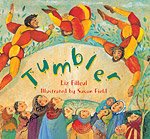


Here are some other books we displayed at the APCE conference. Of course we had tons of adult books, spirituality, theology, social ethics, parish life stuff for church leaders. But most educators have a special place in their hearts—and bookshelves—for picture books. Here are some lovely ones. Scroll down to the bottom to order at a special 20% discount. Just mention that you saw the offer here. Thanks.
Praying With Our Feet Lisa Weaver & Ingrid Hess (Herald Press) $12.99 Leave it to the Mennonites to give us a lovely book showing a fellowship of folks planning to attend a peace rally. Praying? You bet!
Peace One Day: The Making of World Peace Day Jeremy Gilley & Karen Blessen (Putnam) $16.99 This is so educational, fascinating and inspiring—the story of how this young man started an international movement. Mixed media artwork, with photographs and colorful sketches, document the campaign.
Your Special Gift Max Lucado & David Wenzel (Crossway) $15.99 Everybody in Webbick land wants to help, but, alas, most help in ways that they arenÕt particularly suited for. Upon meeting Eli the woodcarver, they realize he gave them each unique gifts that can be used for service. Fabulous!
Tumbler Liz Filleul & Susan Field (Augsburg) $16.99 Tristan the Tumbler wants to do something special for God so joins a monastery. He just canÕt sit still, though, and the wise Abbot counsels Tristan to, well, pursue his calling as a tumbler. That way he can do cartwheels and handstands for God. A classic French tale, this is solid teaching on vocation and giftedness that canÕt be beat. You go, Tristan!
To Everything There Is A Season Jude Daly (Eerdmans) $16.00 The well-loved words of Ecclesiastes take on new life and meaning in the sun-baked rural setting of a South African homestead. Strangely poignant.
Adam and Eve and the Garden of Eden Jane Ray (Eerdmans) $17.00 WeÕve long raved about Ms RayÕs exceptional art, the gold paint, the provocative figures—are they peasants? Mayan? Ancients? The borders and extra-ordinary skill of the artistic presentation make this a special book indeed.
The Beautiful World That God Made Rhonda Gowler Greene & Anne Wilson (Eerdmans) $8.00 We are so glad this is now out in paperback—bold, modern-art design with rhythmic lines that build into a sweeping story of creation make this a radiant read-aloud. We never tired of re-telling of the Biblical creation stories and this is a nice re-do. Fun.
In the Beginning Dandi Daley Mackall & James Kandt (Tommy Nelson) $17.99 Bright, bright colors compliment the vibrant rich telling. These are very experienced childrenÕs authors and this is a grand book.
Remembering the Prophets of Sacred Scripture Marianna Mayer (Phyllis Fogelman Books/Putnam) $16.99 Illustrated with breathtaking classic art, each of the Hebrew prophets are shown, and a biography of their lives and summary of their oracles is given. What a powerful book, perhaps more appropriate for adults.
Sing Praise Rhonda Gowler Green & Janet Broxon (Augsburg-Fortress) $16.99 Bright, vivid pictures illustrate the text based on Psalm 148 and Psalm 150. Ò A glad thanksgiving song to God, creator of allÉÓ
Jesus the Word Mark Francisco Bozzuti-Jones & Shelly Hehenberger (Augsburg-Fortress) $16.99 An award winning, brightly illustrated and nearly wondrous exploration of John 1:1 and the saga of incarnation and redemption. That God makes us Ògood, holy & freeÓ comes through nicely, reminding youngsters that salvation is more than a promise for eternal life, but the gift of ChristÕs righteousness.
Seven Brave Women Betsy Hearne & Bethanne Andersen (Harper Trophy) $6.99 We reviewed this when it came out initially and we are so happy it is now an affordable paperback. This tells of a journey through time where a young girl recounts the exploits of her female ancestors—and what brave women they were. A great tribute to women who make a difference.
A World of Prayers Jeremy Brooks & Elena Gomez (Eerdmans) $16.00 Compiled by an Anglican priest who was born in Burundi, these gentle prayers from around the world capture the diversity and commonality of our universal longings. Some brief instruction is included. Very nicely illustrated, too, with a contemporary touch.
Come Worship With Me: A Journey through the Church Year Ruth Boling & Tracy Dahle Carrier (Geneva) $19.95 This is the most fun romp through the liturgical calendar ever done—a slightly over-sized book with bright, bright church mice. What a great idea, very nicely shown. Every church library should have this.
20% off
This month only
Mention that you saw this on the BookNotes Blog
order here
or call
717.246.3333
some fun titles sold at APCE


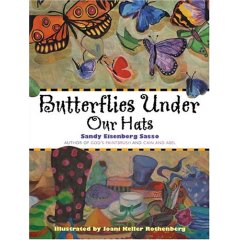

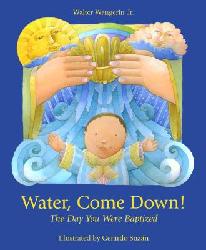


You may recall from my last post that I explained our last outing—selling books for the Eastern region of the Association of Presbyterian Church Educators. What fun. I wanted to show a few of the zillions of books I had there, but my copy skills for bookcovers here on the blog-site are a bit lacking. Sorry they don’t look more orderly. I’d love to show more, but I can’t figure out how to “place” each shot. Oh well, you get the picture. No pun intended… More soon.
church educators are the best
Just got back from a three day gig selling books to a lovely crew of Presbyterian church educators. There are stories to tell about the location, but that can wait. We lugged oodles of kids books, children’s resources, educational curricula, books on children in worship, helping parents understand how to teach children not only about God’s saving grace but about the sacraments which are the “means of grace.” We took theology books—we were at a prestigious seminary and I was nervous about the high-level professors that might stop in (none did)—and Biblical studies, spiritual formation and liturgical aids, stuff about the arts, pop culture, teen ministry and pastoral care. We draped cloth and set up wooden boards and, even with a kiln and a sink in the room, we turned it in to a fine temporary bookstore.
A serious-minded Princeton prof who himself has great sympathy for the pedagogical needs of the church, Gordon Mikoski, helped us think about Calvinism and sacraments (and part of his one talk reminded me of my last blog posting, about food and daily faithfulness in the sacramental nature of ordinary stuff.) I have much to think about and his work on Calvin’s high eucharistic theology is impressive. (Man, he even cited the extraordinary book by William Cavanaugh, Torture and Eucharist.)
Kenda Creasy Dean spoke on youth work—I wanted to tell her how when her first book, Soul-Bearing Life came out we touted it as the most important book on youth ministry written in our lifetime.
The daily Bible study on Ruth was by a leader in the Society for Biblical Literature, Katherine Doob Sakenfield, who wrote the Interpretation: Ruth commentary and a recent study of women in the Old Testament, Just Wives.
Freda Gardner, long a friend of APCE, spoke on ministry to the elderly; her book Living Alone is a practical guide and it is good to have church leaders of her stature speak so caringly and practically. It was a good event.
Most of all, these educators care about resources, need books to use in their varied ministries, and treated us so very, very well. Daughter Stephanie and I took in some talks, met some authors, gabbed a lot and appreciated the lavish gifts—thanks for the chocholate!—and brisk sales.
If you have church school educators in your congregation, thank ’em. If you have paid staff doing educational ministries, youth min, training nursury helpers, working with the aging, doing the educational and programming work of formation in your church, support them any way you can. They work hard, they take great joy in their efforts, and, at least these Eastern APCE folk, love Hearts & Minds. I hope you treat them well.
Just for fun, I’ll show a couple of the kinds of books I took to this gig. These are regular sorts of things here at the shop, even though I tend to blog about other kinds of books. If you find yourself thinking that they could be helpful, just let us know. As I said in the April website column, we love the church and want to serve our congregations in ways that help them thrive.

